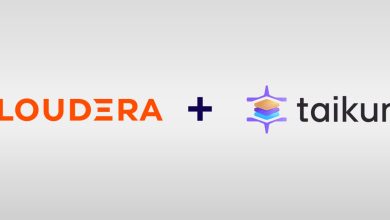
QNAP Case Study – Asia Online Publishing Group Mobile File Sharing Solution

Company Background
Asia Online Publishing Group Sdn Bhd (AOPG) is a Malaysian based specialist publisher responsible for publishing www.datastorageasia.com and www.bigcommunity.net
The company was founded in 2014 and has 12 full time staff as well as another 5 regular freelancers that have access to their systems.
Requirement
As an online publisher AOPG creates, stores and shares a lot of editorial data between all full time staff and retained freelancers. In addition they had a requirement for a subset of the team to share more sensitive data. AOPG’s editorial team and freelancers are highly mobile and they need access to company data from remote locations. Several of the team also needed the ability to access data from multiple devices not just from laptops. As a small company with no IT Manager or IT department the solution needed to be simple with functions like backup being highly automated or adding a new user easy to manage.
QNAP Products used
QNAP TS-231
QNAP VPN
QNAP backup to AWS
QNAP Qfile software
The Background and Previous Solution
AOPG had been using a cloud based popular file sync and share offering, which actually met all of the requirements of the AOPG team, but according AOPG General Manager Melina Hwang as the business started to grow, they encountered two major issues with the old solution. “Quite simply the cost of the public cloud solution started to add up an become more expensive as our team and data volumes grew. In the early days we survived on sharing each other’s free accounts, latter as we got bigger we needed centralised management and storage capacity so upgraded to the business service, which started to get expensive for us as we added users.”
 Melina Hwang – GM at Asia Online Publishing Group.
Melina Hwang – GM at Asia Online Publishing Group.
AOPG also hit another major snag. They found that as the amount of data being shared grew to several hundred GBs, that the file sync and share solution started to consume far too much disk space on their user’s laptops Hwang explains. “This created a real headache. We started needing to delete files because our staff’s laptops were quite literally running out of disk space. This affected the performance of the laptops and seriously impacted the productivity of our staff. We also couldn’t find an easy way to backup our data to another location and we were never completely comfortable with that.” Hwang explains that all of these issues combined led AOPG to seek a new solution.
The QNAP Solution in Detail
AOPG purchased the QNAP TS-231 with 2TB capacity.. Whilst it is possible to configure file sync and share with the QNAP device, doing so was not going to solve AOPG’s problem of taking up space on their staffs laptops. Instead AOPG used a more old school approach in how they configured the device.
They created three network shares, one accessible by all staff and two others that contained more sensitive data made available only to specific staff. Each user account was created on the QNAP with access to the shares defined on a per user basis in the security settings. This ensures that users only get access to data to which they are entitled. As the QNAP storage was served as shares, the data didn’t actually get copied to the users laptops, instead users access one single copy of the data centrally. This meant that AOPG user’s laptops disk space was no longer getting over consumed by having to keep a local copy of all data. Thus the issue of wasting employee time finding files to delete, had been solved. Laptop life was extended and laptop performance degradation due to highly utilised local disks was eliminated.
In order to make this data available to remote and mobile users, AOPG used the VPN function available free of charge in the QNAP management software. This meant that as long as users have network connections they are able to access the company shared volumes from anywhere in the world via their laptops.

AOPG also made use of QNAP’s Qfile app available for iOS and Android. This app works with the “share” set up, which means that’s AOPG’s highly mobile users are able to access the company data from their phones, tablets and mobile devices.
 As an added bonus, all users can access their data through any web browser using the “myqnapcloud” URL. This means that users can still access company data even from a borrowed device without the need for a VPN connection such as a PC in an Internet café or a public web browsing service in an airport.
As an added bonus, all users can access their data through any web browser using the “myqnapcloud” URL. This means that users can still access company data even from a borrowed device without the need for a VPN connection such as a PC in an Internet café or a public web browsing service in an airport.

As backup, AOPG was able to configure the backup applications in the QNAP management software to backup all shared data on the QNAP to a public cloud. In this case AWS S3. The process is totally automated and means that all data is copied off site to secondary a location on AWS at preset scheduled times.

An unexpected benefit AOPG found was extra control and efficiency over their data. By setting up shared folders, this stopped multiple copies of every file being stored on every users laptop. Not only do AOPG feel they are being “greener” by reducing the amount of disk used to keep copies of the same file, they also see a control benefit. It becomes easier to understand who has access to what data, and when an employee leaves the company there is reduced concern about where that employee might have extra copies of the companies data saved.
AOPG saw a major benefit when it came to cost. AOPG paid RM1400 (approx $350 USD) to buy the QNAP, they also paid a local QNAP reseller RM250 to do the configuration. The total spend on the QNAP solution was RM1650 (approx $390USD) After that there is no extra cost to bear, no matter how many new users they add in the future. The only consideration will be adding more disk capacity in the future, however they estimate it will be another 3 years before they need to do so. The comparitive cost of the cloud based file sync and share that AOPG had previously been using was of RM10,700 per annum (approx $2500USD). Over three years this equated to a saving of over RM30,000 (approx $7000 USD)
Conclusion
AOPG decided to use an older method of file sharing instead of file sync and share. By opting to use shared directories, the solution that AOPG implemented drew on methods used many years ago, when file servers based on NT or Windows, allowed multiple users to access a shared drive. However, AOPG were able to use modern technology from QNAP, to enhance the old way of doing things. By utilizing backup to AWS and Qfile, AOPG got the best of traditional and leading edge in a single solution. Enhancing old style shares by implementing public cloud for data protection and modern app technology for mobile access to data. At the same time they saved themselves money and made their users more productive. Melina Hwang sums it up nicely “Every company needs flexibility in how they manage their data. QNAP provides the same functions as publicly available file sync and share services but provides flexibility if you want a slightly different way of doing things. For us it has also removed the monthly bills. No matter how large we grow over the next 2 years or so, we believe the investment we have made will serve us well.




